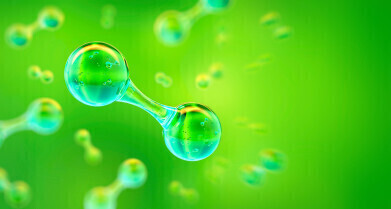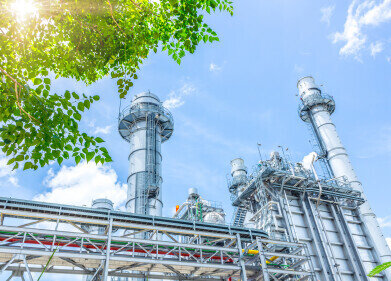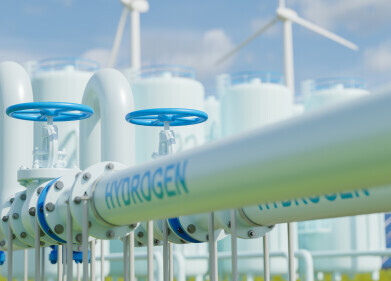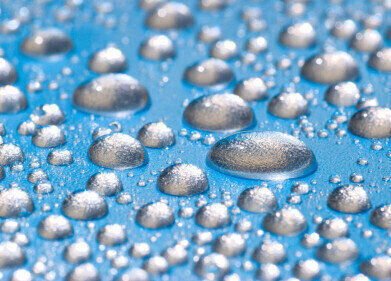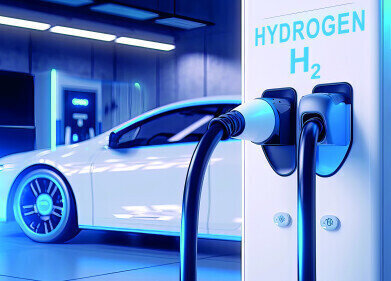Hydrogen Fuel
Researchers prototype solar device that cleans wastewater whilst producing hydrogen fuel
Nov 30 2023
Innovative strides in environmental sustainability have been made by a team of researchers at the University of Cambridge, who have developed a groundbreaking solar-powered device. This device, unique in its design, harnesses solar energy to transform contaminated or seawater into clean hydrogen fuel and potable water, offering a potential solution to two of the most pressing global challenges: energy and water scarcity.
Erwin Reisner, a leading figure in the project, emphasizes the device's significance in fostering a sustainable and circular economy. The design's brilliance lies in its self-sufficiency, operating independently of external power sources and adaptable to any open water body. This versatility makes it particularly valuable in remote or off-grid areas where resources are limited.
Drawing inspiration from nature's photosynthesis, the device marks a significant evolution from its predecessors. Earlier 'artificial leaf' models were limited to generating green hydrogen from pristine water sources. However, this latest innovation extends its capability to polluted water sources, including seawater, simultaneously generating potable water.
The Cambridge team's experimental results, published in Nature Water, demonstrate the device's efficacy. It successfully produced clean water from various sources, including heavily contaminated water and even the River Cam in Cambridge. This breakthrough is attributed to the unique combination of solar fuel production and water purification within a single unit.
Dr. Chanon Pornrungroj and Ariffin Mohamad Annuar, co-lead authors from Cambridge’s Yusuf Hamied Department of Chemistry, overcame significant challenges in integrating these two processes. Traditional solar-driven water splitting, essential for breaking down water molecules into hydrogen and oxygen, requires impeccably pure water. Any impurities could potentially hinder the catalyst or lead to undesired chemical reactions.
The innovative design introduced by Pornrungroj and Mohamad Annuar, members of Professor Reisner's research group, effectively addresses this issue. The device features a photocatalyst deposited on a nanostructured carbon mesh, which excels in absorbing light and heat. This mesh, treated to repel water, not only aids in the photocatalyst's buoyancy but also prevents contaminants from impeding its function.
Enhancing the device's efficiency, the team capitalized on the broader solar spectrum. A specialized UV-absorbing layer on the device's top facilitates hydrogen production through water splitting. The remaining solar spectrum is directed to the device's bottom, vaporizing the water and thereby mimicking a natural leaf's transpiration process.
This dual-functionality device, relying solely on solar power, has the potential to significantly mitigate energy and water crises globally. The World Health Organization reports over three million annual deaths due to indoor air pollution from 'dirty' fuels like kerosene. Replacing these with green hydrogen could drastically reduce this number. Moreover, with 1.8 billion people lacking access to safe drinking water, this innovation offers a beacon of hope.
The simplicity of the design, as highlighted by Mohamad Annuar, is remarkable. It's capable of operating effectively in a variety of water conditions, including turbid waters, thanks to its pollutant-tolerant and floating design.
The broader implication of this technology lies in its alignment with the emerging paradigm of renewable energy and hydrogen fuel as cornerstones of future energy systems. As the world increasingly shifts away from fossil fuels, renewable energy sources like solar power are becoming critical. This device not only captures solar energy but also addresses two of the most pressing challenges of our times: clean energy generation and water purification.
The hydrogen economy, which envisions hydrogen as a key energy carrier, is gaining traction as a sustainable and versatile energy solution. The ability of this device to produce hydrogen fuel from contaminated sources revolutionizes the hydrogen production process, making it more accessible and environmentally friendly. By utilizing a renewable energy source to produce a clean fuel, the technology aligns perfectly with global efforts to reduce carbon emissions and combat climate change.
Moreover, the integration of water purification in this process is particularly relevant given the increasing water stress worldwide. As the device produces hydrogen fuel, it simultaneously addresses the critical need for clean drinking water, thereby tackling two fundamental environmental challenges in a single stroke.
Professor Reisner, who spearheaded the research, underscores the prototype's role in addressing interconnected global issues of climate crisis, pollution, and health. While still in the proof-of-concept stage, the device symbolizes the kind of innovative solutions essential for a sustainable future.
The project received support from several prestigious institutions, including the European Commission’s Horizon 2020 programme, The European Research Council, and the Cambridge Trust. It's a testament to the collaborative effort in advancing environmental sustainability and clean energy solutions.
Digital Edition
PIN 25.3 June/July
June 2024
Analytical Instrumentation - Recent Advances In Various Bench Scale Accelerated Oxidative Testing Methods For Fuels - Petrochemical Industry: Anton Paar Solutions Streamline Processes, Reduce H...
View all digital editions
Events
Jul 30 2024 Jakarta, Indonesia
Jul 30 2024 Jakarta, Indonesia
China Energy Summit & Exhibition
Jul 31 2024 Beijing, China
Jul 31 2024 Chengdu, China
Aug 05 2024 Moon Township, PA, USA
